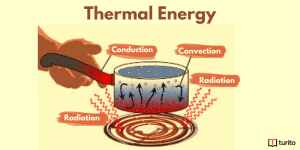Mean Free Path
The speed of molecules of a gas is rather higher than that of sound. Still, when gas leaks from a cylinder in a kitchen, it takes some time to diffuse the molecules from one corner of the kitchen to the other corner of the room. Similarly, it takes smoke clouds to hold together for a few hours.
It ensues because molecules in a gas are finite and small in size. Hence, they are held together to go through collisions. As a result, molecules cannot move in a line unhindered. Their paths keep incessantly deflected.
Now the question is, what impact do these collisions of molecules face? What will happen if the collision rate increases or decreases? What is this collision distance termed? How to calculate the equation for the mean free path?
To get answers to these questions, let’s dive into this article.
What is a Mean Free Path?
The mean free path of a particle, say electrons, ions, or photons, moving in a space with some resistances or obstructions is the distance it travels between two consecutive collisions.
For example, the distance carried by an electron, traveling in a conductor, in the middle of two of its collisions with certain positive charges of the conductor is known as its mean free path.
In probability, we can say that it is the most probable distance within which it is likely to have a collision.
A typical application of it is calculating the size of molecules or atoms. Another major application is gauging any material’s resistivity from the mean free path of its electrons.
What is the Equation for Mean Free Path?
Suppose there is a single molecule possessing a diameter d, moving through other molecules, as it covers some distance via a cylindrical path without colliding with other molecules.
Here, the area of the cross-section is πd2. The volume of the cylindrical path is given by πd2 × vt, where t is the time, and v is the molecule’s velocity. Considering the number of molecules per unit volume as N/V, the mean free path formula is given as,
λ = Length of the path/ number of collisions
Hence, the mean free path equation becomes
λ = (vt)/ [πd2 × vt x (N/V)]
or λ = 1/ [πd2 x (N/V)]
Although the numerator and denominator velocities in the aforementioned equation cancel each other out, they do not actually do so. Average velocity is the velocity in the numerator, whereas relative velocity is the velocity in the denominator. Each speed is different by a factor of two. Consequently, 2 is added to the numerator. The equation then becomes
λ = 1/ √2 x [πd2 x (N/V)]
Now, the time among two successive accidents of molecules is given as,
𝜏 = 1/ [nvπd2]
Therefore, the average distance between two successive clashings (l) of molecules will become
l = 𝜏 x v = 1/ [nπd2]
What are the Factors that Affect the Mean Free Path?
As it’s particles depend upon the number of molecules, density, the radius of molecules, etc., factors affect its value. Other factors, such as pressure, temperature, etc., also affect the mean free path.
How these factors affect is given below:
1. The Number of Molecules
According to the path formula, the number of molecules, n, is inversely proportional to the mean free path of molecules, λ. Also, with the increase in the number of molecules, the collision rate among them increases. As a result, it decreases.
2. Density
With the increase in density, the number of molecules increases. It means collisions between them increase. Similarly, with the decrease in density, the mean free path of molecules increases.
3. The Radius of the Molecules
As the radius of the molecules increase, the distance between them decreases, and the area they cover increases. As a result, collisions among them occur more frequently. Therefore, the mean free path of the molecules decreases.
4. Pressure
If the pressure between the molecules increases, the average speed among them increases. Therefore, a collision takes place between the molecules. As a result, with the increase in pressure, the mean free path of particles decreases.
5. Temperature
Gay Luccas’ Law states that the pressure and temperature of a certain quantity of gas are precisely proportional to one another. Thus, by raising the temperature between molecules, just as in the case of pressure, it decreases.
Mean Free Path of Ions
When an atom loses its stability by gaining or losing an electron or a photon, it turns into its ion form. There are various applications of ions, such as water purification. The role means free path plays in analyzing the distance from where the ions are extracted and the position where several collisions among molecules take place.
Mean Free Path of Photons
The average distance a photon covers among atoms’ collisions, a pencil beam of single-energetic photons is generated. This distance is termed the mean free path of a photon. It hangs on the energy of the photons and the selected material that produces collisions. It is given as,
l = 𝜇-1 = [(𝜇/𝜌)𝜌]-1
Where μ/ρ is the mass attenuation coefficient, μ is the linear attenuation coefficient, and ρ is the density of the material.
In X-ray radiography, the photons are not mono-energetic like in the above case of gamma radiography. The photons, in this case, have some energy distribution, i.e., spectrum. Therefore, it becomes difficult to calculate the mean free path of photons in X-ray radiography.
Photons moving across the selected material are reduced with probabilities hanging on their energy. As a result, their distribution changes in a process called Spectrum Hardening.
Solved Problems on Mean Free Path
Problem 1:
Calculate the mean free path of the oxygen molecule traveling in air at 200K temperature at 1 atm pressure. Given: 1.5 × 10-6 m is the diameter of the oxygen molecule.
Solution: As the mean free path formula is
λ = 1/ √2 x [πd2 x (N/V)]
Here, N/V is the number density compared to P/KT by ideal gas law,
Therefore,
λ = 1/ √2 x [πd2 x (P/KT)]
In putting values,
λ = 0.272 x 10-14 m
Hence, the required mean free path is 0.272 x 10-14 m.
Problem 2:
Calculate the mean free path of the nitrogen molecule traveling in air at 150 K at 1 atm pressure. Given: 1 × 10-6 m is the diameter of the nitrogen molecule.
Solution: As the mean free path formula is
λ = 1/ √2 x [πd2 x (N/V)]
Here, by ideal gas law, N/V is the number density compared to P/KT.
Therefore,
λ = 1/ √2 x [πd2 x (P/KT)]
In putting values,
λ = 2.17 × 10-14 m
Hence, the required mean free path is 2.17 × 10-14 m.
Conclusion
You are now well-informed about the mean free path of different particles from the above conversation. You can explain its particles in terms of molecules of gas, electrons, or photons. And can be calculated using the mean free path equation.
You can also use the mean free path calculator to know about the collisions between gas molecules or the factors that affect the collision rates.
As per the kinetic theory of gasses, the gas molecule is always in constant motion. It keeps colliding with each other and the walls of the container. In such a case, it is also challenging to learn the dynamics of the gasses.
Frequently Asked Questions
1. How do you define the mean free path for electrons?
In the case of metals, many electrons are present in the conduction band. These electrons get affected when external electromagnetic forces like heat input or voltage are applied. As the electrons are bound to move around, they interact with the neighboring electrons sooner or later. The average distance traveled between two interactions.
2. What is the relation of temperature and pressure with the mean free path of particles?
The standard distance between clashings for a gas molecule is evaluated from kinetic theory. It exhibits inverse proportionality to the pressure and molecular diameter and linear proportionality to the temperature. Mathematically, it is expressed as l x p= πdkT, where p = pressure, T = temperature, and l = mean free path.
3. Why does the mean free path of the molecules decrease when heat is provided to them?
Heating pushes an increase in the kinetic energy of the particles. It will steer to an expansion in the radius of the molecules, which leads to more collisions. As a result, the mean free path of the molecules decreases.

Relevant Articles
Understanding Thermal Energy: What It Is and How It Works
Thermal energy is essential to our daily lives, from warming …
Understanding Thermal Energy: What It Is and How It Works Read More »
Read More >>Avogadro’s Number: Meaning, Importance, and More
Introduction The concept of measuring the microscopic particles that make …
Avogadro’s Number: Meaning, Importance, and More Read More »
Read More >>Kinetic Friction – Definition, Laws, Types
Kinetic Friction Kinetic force is a force acting between two …
Kinetic Friction – Definition, Laws, Types Read More »
Read More >>




















Comments: